

|
 |
Campbell's Kingdom
R2 - United Kingdom - Network Review written by and copyright: Paul Lewis (22nd June 2009). |
|
The Film
 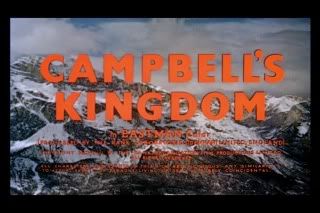
Directed by Ralph Thomas, Campbell’s Kingdom was produced for the Rank Organisation as a vehicle for the actor Dirk Bogarde, at a time when Bogarde was trying to develop a screen persona away from the romantic and neurotic roles with which he was then associated. Set in Canada and partly shot in that country, Campbell’s Kingdom was created as part of the Rank Organisation’s late-1950s attempt to deliver pictures with a greater ‘international’ appeal. Adapted from the novel by Hammond Innes, the screenplay was written by Robin Estridge, and the film features appearances from many familiar faces from British cinema of the 1950s and 1960s, including Stanley Baker (as the film’s chief villain), James Robertson Justice and Sid James. The film opens with two cowboys approaching ‘Campbell’s Kingdom’, an area of land owned by the elderly Stuart Campbell. The two men discuss the qualities of Stuart Campbell, stating that although Campbell is ‘crazy’ about oil, on his land there’s ‘not even enough to slick your hair down with’. Entering Campbell’s shack, the men find Campbell dead on the floor, a survey report of his land in his hands. The report claims to state that Campbell’s Kingdom is completely devoid of oil. Meanwhile, back in the town Mr Morgan (Stanley Baker) celebrates after hearing about Campbell’s death, asserting, ‘Well, I guess we can go ahead now’: Morgan and his crew are in the area to build a hydroelectric dam for a company named Fergus Mines, and the only obstacle in their endeavour was Campbell, whose ‘kingdom’ was to be affected by the dam. 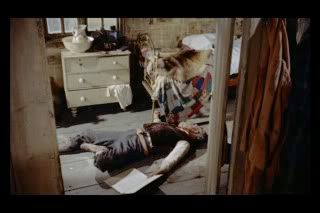
Shortly, an Englishman (Dirk Bogarde) arrives in the town and requests a room. After revealing himself to be Bruce Campbell, the grandson of Stuart Campbell, the man asserts that he expects to claim his grandfather’s land, hoping to ‘live up there’. However, Morgan informs him that Fergus Mines has government permission to flood the land. Campbell reads a letter from his grandfather in which his grandfather claims that he is ‘old and tired’ and no longer has the energy ‘to fight for my beliefs’. However, Campbell’s grandfather claims that ‘after the great landslide of 1926, I saw oil seeping from the rock’. The letter reinforces Campbell’s desire to investigate the story surrounding his grandfather’s land. Acknowledging Campbell as a danger to his interests, Morgan threatens Campbell: Morgan ‘couldn’t flood when the old man was a alive. He was a … sort of a national figure. But no-one’s going to stand by you: you’re nobody’. Deciding that Campbell could cause trouble for him, Morgan tries to have Campbell run down in the street. Morgan’s attempt on Campbell’s life is unsuccessful, but Campbell collapses, apparently due to altitude sickness; he is tended to by Jean Lucas (Barbara Murray). 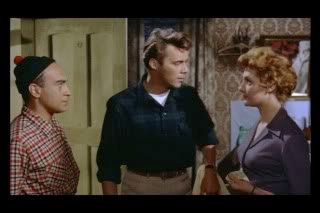
However, when he awakens Campbell reveals to Jean that doctors have told him he only has six months to live, and his collapse was due to an established illness rather than to altitude sickness. With seemingly nothing left to loose, Campbell causes more trouble for Morgan and his crew, discovering that the survey of Campbell’s Kingdom is not necessarily conclusive and may in fact be forged: oil may indeed exist on the land. With this knowledge, Campbell is faced with the task of reclaiming his grandfather’s land and frustrating Morgan’s crew’s endeavours to flood the territory. Campbell’s Kingdom formed part of trio of films by director Ralph Thomas for the Rank Organisation, all of them produced by Betty Box and starring Dirk Bogarde. The other films in this series are A Tale of Two Cities and The Wind Cannot Read, both distributed in 1958. These films were produced as part of Rank’s attempt to break into the American market, spearheaded in 1957 by the creation of the subsidiary company Rank Film Distributors of America (Porter, 2003: 52-4). Rank Film Distributors of America was designed to allow Rank to distribute their films in the US without needing to go through the larger chains of distribution, enabling Rank’s pictures ‘to penetrate the US market and bypass the major American distributors’ (ibid.: 53). In its attempts to succeed in capturing foreign audiences, Rank focused on producing ‘international’ pictures, of which Campbell’s Kingdom was one, along with Reach for the Sky (Lewis Gilbert, 1956), A Night to Remember (Roy Ward Baker, 1958) and North West Frontier (J. Lee Thompson, 1958). These were films that were designed to have an international appeal: largely action-oriented, the films focused on either historically significant incidents (the sinking of the Titanic, for example) or tales of mystery in exotic locales. However, despite their endeavours Rank was unsuccessful in its attempts to break the American market, and Rank Film Distributors of America was closed down in 1959 (ibid.). 
In his book Typical Men (2003), Andrew Spicer refers to this adaptation of Campbell’s Kingdom as an attempt to ‘combine the appeal of the tough action thriller with a wistful romanticism’ (32). The film essentially takes the inner form of a Western, with an individualist hero competing against ‘big business’ in order to assert his right to a specific piece of territory. The conflict between the film’s individualist hero and the greedy corporate sensibility of the antagonists recalls the conflicts that structure such classic 1950s ‘adult’ Western films as Shane (George Stevens, 1953; reworked in Clint Eastwood’s revisionist Westerns High Plains Drifter, 1973, and Pale Rider, 1985) and Gunman’s Walk (Phil Karlson, 1958). However, alongside its action-oriented narrative Campbell’s Kingdom features a strong romantic subplot, revolving around the romance between Bruce Campbell and Jean Lucas. In the autobiography of the actor Michael Craig, who appeared in Campbell’s Kingdom, Craig reflects on his time working on the film, suggesting that Bogarde was at that point mostly associated with romantic roles. Craig claims that with Campbell’s Kingdom Bogarde was consciously trying to change his screen image: Bogarde ‘had had a lot of success playing neurotic and romantic young men. I think he wanted to change his image into something more robust, but the sight of him threatening to knock the block off some burly oil driller in a Canadian bar was more ludicrous than robust’ (Craig, 2005: 76). 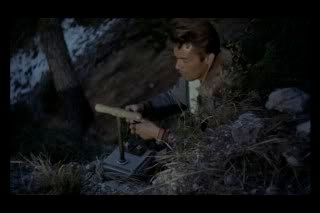
Although Bogarde is effective in his role as Bruce Campbell, he is clearly not an ‘action’ star, and his roles throughout the 1960s and 1970s tended to shy away from the elements of action that Bogarde displays here. In fact, Bogarde is largely upstaged by Stanley Baker, as the film’s principal antagonist. At this point in his career, Baker was principally known for playing villains in films such as A Hill in Korea (Julian Amyes, 1956) and Checkpoint (Ralph Thomas, 1956); however, within the next few years, Baker’s career would take a different turn, and the actor would become associated with flawed heroic roles in films like Violent Playground (Basil Dearden, 1958), Hell is a City (Val Guest, 1960) and Zulu (Cy Endfield, 1964). 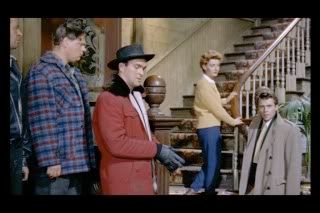
The film runs for 97:35 mins (PAL) and appears to be uncut.
Video
The film is presented in a screen ratio of 1.78:1, with anamorphic enhancement. The image is clear and detailed throughout, with a vibrant palette. This is an excellent transfer. 
Audio
Likewise, audio – presented via a two-channel monaural track – is clear throughout the film. However, there are no subtitles.
Extras

This release contains a good range of contextual material, including: - a trailer (2:30), which foregrounds the action elements of the film. - some textless material (silent) (1:49) . This represents the film’s opening credits sequence, sans titles. This opening credit sequence is highly effective in establishing the film’s setting. - an image gallery (1:49) containing a series of promotional images from the film’s shoot. - a portrait image gallery (1:34) , featuring shots of the film’s chief cast. - a behind the scenes image gallery (1:31) , featuring a host of ‘behind the scenes’ images from the shooting of the film.
Overall
Featuring performances by a host of recognisable and respected faces, Campbell’s Kingdom is a solid adventure yarn; although Bogarde is clearly cast against type as the protagonist of this action-themed film, he is never less than watchable. Essentially a Western in structure, this production is notable for being one of Rank’s attempts to break the international market. This DVD contains an excellent presentation of the film and a good range of contextual material. Due to this, this release comes with a high recommendation. References Craig, Michael, 2005: The Smallest Giant. London: Allen & Unwin Porter, Vincent, 2003: British Cinema of the 1950s: The Decline of Deference. Oxford University Press Spicer, Andrew, 2003: Typical Men: The Representation of Masculinity in Popular British Cinema. London: I. B. Tauris For more information, please visit the homepage of Network DVD.
|
|||||

|